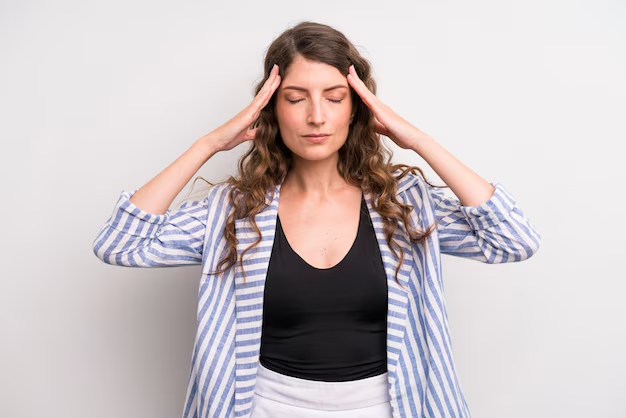Fast Relief: How to Ease a Migraine Effectively
Migraines can hit fast and hard, disrupting your plans and leaving you desperate for relief. Whether you’ve experienced these debilitating headaches before or it's your first encounter, knowing how to alleviate the symptoms quickly can make all the difference. Let's explore various strategies to combat migraines and regain control of your day.
Understanding Migraines
Before diving into quick relief strategies, it's helpful to understand what migraines are and why they occur. Not just an ordinary headache, migraines are a neurological condition that can feature a range of symptoms, including:
- Throbbing or pulsing pain on one side of the head
- Nausea and sometimes vomiting
- Sensitivity to light and sound
- Visual disturbances such as auras
Migraines can be triggered by a variety of factors such as stress, dietary choices, hormonal changes, or lack of sleep. Identifying your personal triggers is crucial for managing and preventing future attacks.
Quick Relief Strategies for Migraines
When you feel a migraine coming on, every moment counts. Here are some effective tactics that can help you manage and potentially reduce the duration and intensity of a migraine.
1. Retreat to a Quiet, Dark Space
One of the fastest ways to reduce migraine symptoms is to find a calm environment:
- Dim the lights: Light sensitivity can exacerbate the pain, so keeping the room dark can help.
- Minimize noise: Use earplugs or noise-canceling headphones to create a peaceful setting.
- Lie down: Resting in a comfortable position can ease the tension in your body.
2. Apply a Cold Compress
Using a cold compress can provide immediate relief by numbing the area and reducing inflammation:
- Use a cold pack or a bag of frozen vegetables: Wrap it in a cloth and apply it to the forehead or neck.
- Time: Leave the compress in place for 15–20 minutes, then take a break.
3. Stay Hydrated
Dehydration can be a significant migraine trigger, so drinking water is essential:
- Sip slowly: Drinking too quickly might upset your stomach if you're feeling nauseous.
- Include electrolytes: Consider adding an electrolyte solution or drinking a sports drink to replenish minerals.
4. Manage Caffeine Intake
Caffeine can be both a friend and foe when it comes to migraines:
- In moderation: A small amount of caffeine may relieve early migraine symptoms.
- Avoid excess: Too much or inconsistent caffeine intake can lead to withdrawal headaches.
5. Practice Gentle Yoga or Stretching
If you're able, engaging in light yoga or stretching can relax your muscles and improve blood flow:
- Target your neck and shoulders: These areas often hold tension that can contribute to head pain.
- Breathe deeply: Focus on slow, deep breaths to soothe your nervous system.
6. Use Aromatherapy
Certain scents have been known to alleviate migraine symptoms and promote relaxation:
- Lavender oil: A calming aroma that can be used during a massage or diffused into the room.
- Peppermint oil: May help reduce headache symptoms when applied topically with a carrier oil.
7. Over-the-Counter Pain Relief
For quick relief, some people turn to OTC medications designed to combat migraine symptoms:
- Choose wisely: Ibuprofen or acetaminophen can be effective, but use them as directed on the label.
- Be mindful: Frequent use can lead to medication-overuse headaches.
Long-Term Strategies for Migraine Management
While fast relief is essential during an attack, long-term migraine management is equally important to reduce frequency and intensity.
Identify and Avoid Triggers
Keeping a migraine diary can help pinpoint your unique triggers:
- Document episodes: Note the time, date, and circumstances of each migraine.
- Look for patterns: Common triggers include certain foods, stress, or lack of sleep.
Establish a Routine
Consistency in your daily habits can help stave off migraines:
- Regular sleep schedule: Aim for the same bedtime and wake-up time daily.
- Balanced meals: Eating nutrient-rich foods at regular intervals can keep your energy levels stable.
Regular Exercise
While rigorous workouts during a migraine aren't advisable, regular, gentle exercise can reduce the frequency of migraines over time:
- Choose low-impact activities: Walking, swimming, and cycling are excellent options.
- Stay consistent: Aim for at least 30 minutes a day, several times a week.
Stress Management Techniques
Because stress is a common migraine trigger, employing stress-reduction techniques can be beneficial:
- Mindfulness meditation: Regular practice can decrease stress overall.
- Progressive muscle relaxation: Tense and release muscle groups to promote relaxation.
Consult a Healthcare Provider
If migraines significantly impact your life, it's wise to talk to a healthcare professional:
- Explore options: They may recommend prescription medications or therapies tailored to your needs.
- Stay informed: Regular check-ups ensure your management plan is effective.
Unlocking a Pain-Free Future
Empowering yourself with knowledge is a vital step in alleviating migraines swiftly and efficiently. Understanding your body, recognizing signs early, and deploying effective strategies can make a world of difference. By incorporating both immediate relief techniques and preventive measures, you can minimize migraines' impact on your life and reclaim more productive, joyful days.
Summary: Practical Tips for Combating Migraines
- 💡 Retreat to darkness: Dim lights and quiet surroundings help soothe symptoms.
- 🧊 Cold compress: Apply to the head or neck for 15-20 minutes.
- 💧 Hydrate: Sip water slowly and include electrolytes if possible.
- ☕ Caffeine: Can help or hinder—exercise moderation.
- 🧘 Gentle yoga/stretching: Relieve tension in neck and shoulders.
- 🌿 Aromatherapy: Use lavender or peppermint oil for relaxation.
- 💊 OTC meds: Use appropriately for temporary relief.
- 📓 Migraine diary: Identify and avoid personal triggers.
- 🏃 Regular exercise: Low-impact activities to minimize frequency.
- 🧘♂️ Stress management: Meditation and relaxation techniques reduce stress-related migraines.
By integrating these tips into your routine, you can take significant steps toward managing migraines effectively.
